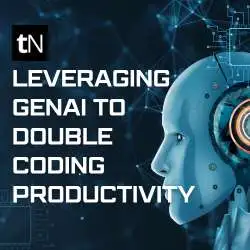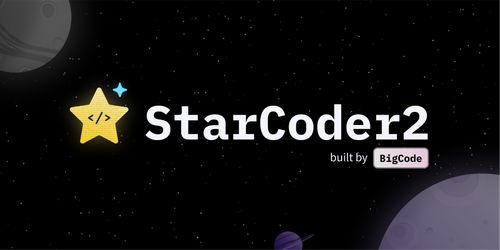GenAI’s flagship tool, supports the coding collaboration and creativity of the Replit platform. It provides real-time coding support, helping new and experienced programmers with suggestions, terminations, and logic. These two-dimensional devices not only help with coding tasks but are also valuable learning opportunities, improving information about design requirements. GhostWriter, embedded in the Replit collaborative environment, highlights the use of GenAI to achieve a democratic understanding of coding so that practitioners around the world can collect, test and collaborate in a variety of ways.
Regularly attractive AI equipment for repetitive responsibilities and writing boilerplate code or documentation permits builders to redirect their attention toward extra complicated and cutting-edge paintings. Furthermore, by leveraging GenAI for debugging and checking, developers can quickly pick out capacity problems that could take extensively longer to find manually.
Another vital approach is to apply GenAI to exploratory coding. When working on new talents or experimenting with unusual generations, GenAI can generate code snippets and scaffold entire programs, notably speeding up the learning and development cycle.
It is also critical for builders to stay up-to-date with brand new improvements and excellent practices in the rapidly evolving field of generative AI. Participating in forums and online communities, as well as attending workshops or webinars, can provide valuable insights into how to effectively leverage GenAI.
In essence, by neatly incorporating Generative AI equipment within the development workflow, builders can double their productivity and decorate the creativity and best of their software program projects.
Generative AI is transforming the field of software program development, bringing about a profound change in code writing, maintenance, and evolution. It is dismantling conventional barriers to software program creation and democratizing coding by making it more handy for a broader range of skill levels. With skills like automatic code generation, bug fixing, and even the translation of natural language specs into functioning code, GenAI is not simply an assistant to the developer; it’s becoming an essential part of the improvement technique. This transformation paves the way for a future where the emphasis shifts from the mechanical factors of coding to the creative and strategic elements, allowing developers to focus on innovation and exploring new technologies. GenAI not only adds dynamism to software improvement but also fundamentally redefines what it means to be a developer in today’s rapidly evolving technological landscape.
If you’re seeking a deeper understanding of how Generative AI affects crew productivity and its distinct challenges, you can read our detailed discussion at Generative AI in Software Development Team Productivity and Challenges. This article delves into the nuances of integrating GenAI into software program development teams, exploring both the productivity benefits and challenges teams can face.
Case Studies
Several companies and individuals have already started to harness the energy of GenAI, and it has had outstanding effects. For instance, in preference to writing out bloated and verbose conditional statements, developers can generate concise and optimized code immediately.
In the world of open supply, the effect is equally profound. Projects have seen an increase in efficiency as developers spend less time on mundane obligations and more on innovating and troubleshooting.
We’ve witnessed groups launch software updates and patches more quickly than would have been feasible before, thanks to the assistance of GenAI. It opens a new door for startups and established agencies to be more agile and aggressive in the market.
Best Practices
Integrating GenAI into your workflow has to be strategic. Here are a few first-class practices to recall: Start with small obligations and progressively scale up to large sections of code to ensure you are familiar with the tool’s capabilities. Always carefully review GenAI’s output. While it excels at generating code, it does not recognize the larger context or business needs, and human oversight is usually vital. Employ a unified coding standard across the crew, ensuring consistency in the device’s output. It’s also critical to keep in mind the moral implications of using GenAI. The developer’s responsibility is to make certain that the code it generates is steady and compliant with policies. Additionally, there can be troubles with the possession and licensing of code partly or entirely generated through AI.
Future Trends
GenAI’s future in software program improvement is promising. We can count on additional gear, such as GitHub Copilot, to emerge, providing additional customization and integration capabilities. These pieces of equipment may become even more intelligent, incorporating styles and practices observed in billions of strains of code across the web. Developers will likely shift their focus from questions about whether to use AI in programming to how to use it effectively and ethically. Furthermore, we will see a transformation in software program improvement training. The focus will shift towards comprehending and utilizing AI-generated code, enabling developers to concentrate more on advanced problem-solving and less on fundamental syntax and structure.
With the developing adoption of AI within the software program business enterprise, GenAI is poised to become a critical partner for every developer, serving as an assistant that doesn’t get worn out, can discover more options than a human brain, and is continuously up to date with code necessities and awesome practices.
Conclusion
The rise of GenAI presents an interesting financial dilemma for developers in the broader software and technology industries. Coding doubles productivity, unlocks developers’ creative potential, and opens new frontiers as we design technology and build software programs. My name for movement is effortless. If you’re a developer, feel free to explore GenAI tools and how they could fit into your workflow. The time you invest now in learning and leveraging that gear pays dividends shortly. FThe industry as a whole is just beginning to communicate about the role of AI in software program improvement. e are witnessing a purposeful shift that undoubtedly marks the fate of how we develop software. Now is the time to engage with, lead and learn from these changes to create a powerful, efficient and enjoyable experience for entrepreneurs everywhere.

